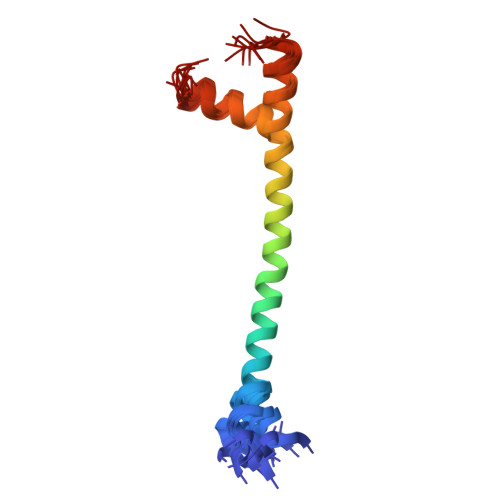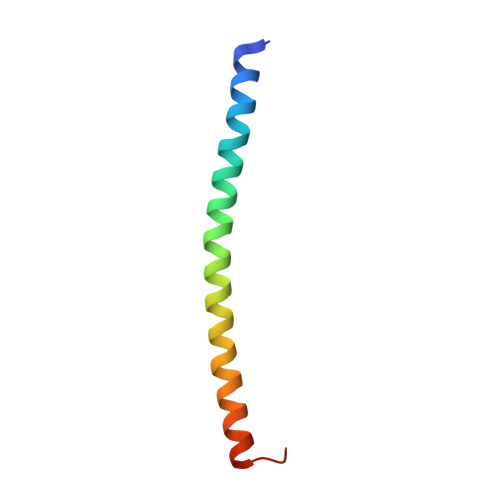Transient lipid-bound states of spike protein heptad repeats provide insights into SARS-CoV-2 membrane fusion.
Chiliveri, S.C., Louis, J.M., Ghirlando, R., Bax, A.(2021) Sci Adv 7: eabk2226-eabk2226
- PubMed: 34623907
- DOI: https://doi.org/10.1126/sciadv.abk2226
- Primary Citation of Related Structures:
7R95 - PubMed Abstract:
Entry of SARS-CoV-2 into a host cell is mediated by spike, a class I viral fusion protein responsible for merging the viral and host cell membranes. Recent studies have revealed atomic-resolution models for both the postfusion 6-helix bundle (6HB) and the prefusion state of spike. However, a mechanistic understanding of the molecular basis for the intervening structural transition, important for the design of fusion inhibitors, has remained elusive. Using nuclear magnetic resonance spectroscopy and other biophysical methods, we demonstrate the presence of α-helical, membrane-bound, intermediate states of spike’s heptad repeat (HR1 and HR2) domains that are embedded at the lipid-water interface while in a slow dynamic equilibrium with the postfusion 6HB state. These results support a model where the HR domains lower the large energy barrier associated with membrane fusion by destabilizing the host and viral membranes, while 6HB formation actively drives their fusion by forcing physical proximity.
Organizational Affiliation:
Laboratory of Chemical Physics, National Institute of Diabetes and Digestive and Kidney Diseases, National Institutes of Health, Bethesda, MD 20892, USA.
















